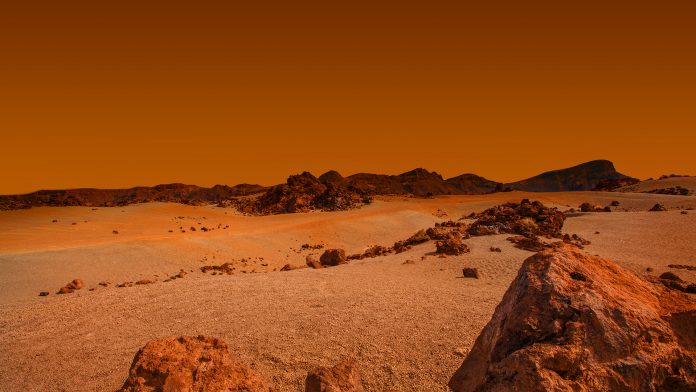In the first study of its kind, world-leading researchers have potentially uncovered the mysterious processes that forged the surface of Mars.
The investigation, pioneered by researchers at The University of Texas at Austin, has illuminated that colossal floods stemming from crater lakes were undoubtedly and considerably influential at shaping the surface of Mars, fashioning deep chasms, and transporting gigantic amounts of sediment.
The findings from the study are published in Nature.
Whereas on Earth, the river erosion that helped to shape our little blue planet is a slow-moving process, the floods that sculpted the Martian landscape persisted for just a few weeks, eroding more than enough sediment to fill both Lake Superior and Lake Ontario entirely.
Tim Goudge, the lead author of the research and an assistant professor at the UT Jackson School of Geosciences, said: “If we think about how sediment was being moved across the landscape on ancient Mars, lake breach floods were a really important process globally. This is a bit of a surprising result because they’ve been thought of as one-off anomalies for so long.”
Lakes on Mars
Billions of years ago, the surface of Mars was rife with crater lakes, with the red planet being home to vast amounts of liquid water, with some of the lakes holding enough to be considered a small sea. However, when the volume of water became too considerable to contain, the crater would be breached, resulting in devastating flooding that left river valleys in its wake, a theory that a 2019 study led by Goudge confirmed. In their study, the researchers investigated the 262 breached lakes that once flourished on the surface of Mars, analysing how they moulded the Martian world we know today.
Goudge commented: “Remote sensing images taken by satellites orbiting Mars have allowed scientists to study the remains of breached Martian crater lakes. However, the crater lakes and their river valleys have mostly been studied on an individual basis.”
A lasting impression on the surface of Mars
To conduct their investigation, the team employed a preexisting database of Martian river valleys, subsequently dividing them into two categories, valleys that formed at the edge of a crater, indicating they formed during a lake breach flood, and valleys formed elsewhere on the landscape, suggesting a more gradual formation over time.
Next, the researchers evaluated the depths, length, and volume of the varying valley types, discovering that river valleys created by crater lake breaches punched far above their weight, responsible for nearly 25% of the planet’s valley volume despite making up only 3% of the valley length.
“This discrepancy is accounted for by the fact that outlet canyons are significantly deeper than other valleys,” said study co-author Alexander Morgan, a research scientist at the Planetary Science Institute.
The median depth of a breach river valley – 559 feet – is over twice that of other river valleys that were developed slowly over time, which have a median depth of around 254 feet. Additionally, despite the chasms being created almost instantly in geological terms, they have had a lasting impact on the landscape. The scientists believe that the breaches created canyons so deep that they may have influenced the formation of other river valleys in proximity, potentially an alternative explanation for the mysterious Martian river valley topography commonly attributed to climate. The investigation signifies that lake breach river valleys were pivotal in shaping the surface of Mars, proving new evidence of how processes can be so different on other planets.
Goudge said: “When you fill (the craters) with water, it’s a lot of stored energy there to be released. It makes sense that Mars might tip, in this case, toward being shaped by catastrophism more than the Earth.”









